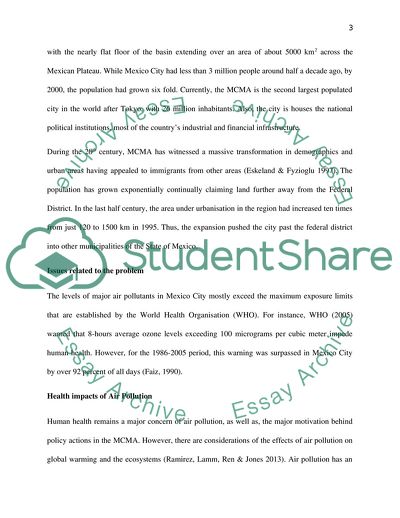Cite this document
(Problems Caused by Urbanisation in Mexico City Coursework, n.d.)
Problems Caused by Urbanisation in Mexico City Coursework. https://studentshare.org/environmental-studies/1874185-identify-a-problem-caused-by-urbanization-and-evaluate-the-effectiveness-of-two-solutions-which-have-been-implemented-to-combat-the-issue-in-mexico-cityuse-data-to-support-your-argument
Problems Caused by Urbanisation in Mexico City Coursework. https://studentshare.org/environmental-studies/1874185-identify-a-problem-caused-by-urbanization-and-evaluate-the-effectiveness-of-two-solutions-which-have-been-implemented-to-combat-the-issue-in-mexico-cityuse-data-to-support-your-argument
(Problems Caused by Urbanisation in Mexico City Coursework)
Problems Caused by Urbanisation in Mexico City Coursework. https://studentshare.org/environmental-studies/1874185-identify-a-problem-caused-by-urbanization-and-evaluate-the-effectiveness-of-two-solutions-which-have-been-implemented-to-combat-the-issue-in-mexico-cityuse-data-to-support-your-argument.
Problems Caused by Urbanisation in Mexico City Coursework. https://studentshare.org/environmental-studies/1874185-identify-a-problem-caused-by-urbanization-and-evaluate-the-effectiveness-of-two-solutions-which-have-been-implemented-to-combat-the-issue-in-mexico-cityuse-data-to-support-your-argument.
“Problems Caused by Urbanisation in Mexico City Coursework”. https://studentshare.org/environmental-studies/1874185-identify-a-problem-caused-by-urbanization-and-evaluate-the-effectiveness-of-two-solutions-which-have-been-implemented-to-combat-the-issue-in-mexico-cityuse-data-to-support-your-argument.


